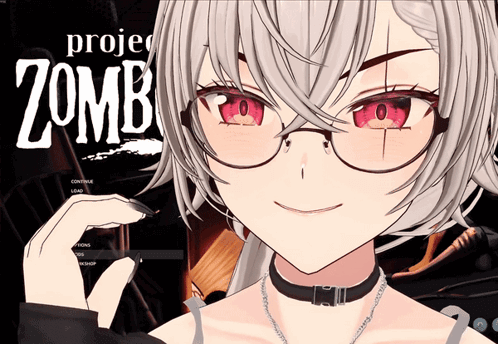1. Introduction
1.1 Overview of the Tutorial
Welcome to “The Ultimate Saruei Face Tutorial You’ve Been Waiting For!” In this comprehensive guide, we’ll delve into the intricate world of drawing faces in the unique Saruei style. Whether you’re a novice artist or a seasoned illustrator looking to expand your repertoire, this tutorial is designed to provide you with the skills and insights needed to master this distinctive art form.
1.2 Importance of Facial Drawing in Art
Facial drawing is a cornerstone of artistic expression. The face is the primary medium through which we convey emotions, tell stories, and connect with viewers. Mastering facial drawing enhances your ability to create compelling characters and scenes, making your artwork more impactful and relatable.
1.3 Why Saruei Style?
The Saruei style, known for its anime-influenced aesthetics and expressive features, has gained significant popularity in the art community. Named after the renowned artist Saruei, this style is characterized by its detailed and emotive portrayals of faces. Learning this style can add a unique flair to your work, making it stand out in the crowded field of digital art.
2. Understanding Saruei Art Style
2.1 Historical Context
The Saruei art style emerged from the broader anime and manga traditions, blending elements of Japanese pop culture with Western influences. Saruei, the artist behind this style, has been instrumental in popularizing it through social media and various art platforms.
2.2 Key Features of Saruei Art
Saruei art is distinguished by its exaggerated features, particularly the eyes and facial expressions. The style emphasizes emotional depth, with intricate line work and shading techniques that bring characters to life. Other hallmarks include vibrant color palettes and dynamic compositions.
2.3 Common Themes and Elements
Common themes in Saruei art include fantasy, adventure, and everyday life. Elements such as flowing hair, expressive eyes, and detailed backgrounds often feature prominently, creating a rich visual narrative that captivates audiences.
3. Materials Needed
3.1 Essential Tools and Supplies
To get started with Saruei face drawing, you’ll need a few essential tools:
- Pencils (HB, 2B, and 4B)
- Erasers (kneaded and precision)
- Fine liners or ink pens
- Sketchbook or drawing paper (smooth texture)
3.2 Recommended Brands and Products
While any brand will do, some recommended brands include:
- Pencils: Staedtler, Faber-Castell
- Erasers: Prismacolor, Tombow
- Fine liners: Micron, Copic
- Paper: Strathmore, Bristol
3.3 Digital Tools and Software
For digital artists, the following tools and software are highly recommended:
- Tablet: Wacom Intuos, Huion Kamvas
- Software: Adobe Photoshop, Clip Studio Paint, Procreate
4. Preparing Your Workspace
4.1 Setting Up a Comfortable Drawing Area
A well-organized workspace can significantly enhance your productivity and comfort. Ensure your drawing area is well-lit, clutter-free, and ergonomically arranged to prevent strain during long drawing sessions.
4.2 Organizing Your Materials
Keep your drawing tools within easy reach. Use organizers and storage solutions to maintain an orderly workspace, allowing you to focus more on your art and less on searching for supplies.
4.3 Digital Workspace Setup
For digital artists, setting up a workspace involves arranging your tablet and computer in a way that minimizes strain. Ensure your screen is at eye level and your tablet is positioned comfortably for extended use.
5. Basic Anatomy for Saruei Faces
5.1 Understanding Facial Proportions
Mastering facial proportions is crucial for drawing realistic and balanced faces. In Saruei style, proportions may be slightly exaggerated, but understanding the basics is still essential.
5.2 Key Anatomical Landmarks
Key landmarks include the position of the eyes, nose, mouth, and ears. Typically, the eyes are placed halfway down the head, with the nose halfway between the eyes and the chin, and the mouth positioned one-third of the way down from the nose to the chin.
5.3 Differences in Male and Female Faces
Saruei style often highlights differences between male and female faces. Female faces tend to have softer lines and larger, more expressive eyes, while male faces may feature sharper angles and more defined jawlines.
6. Sketching the Basic Shape
6.1 Drawing the Head Outline
Begin by drawing an oval shape to represent the head. This serves as the foundation for your facial features and helps maintain proportion and symmetry.
6.2 Adding Guidelines for Facial Features
Add horizontal and vertical guidelines to divide the face into sections. These lines will help you accurately place the eyes, nose, mouth, and ears.
6.3 Refining the Basic Shape
Refine the head outline by adjusting the shape of the jaw and adding subtle curves to represent the cheeks and chin. This step sets the stage for more detailed feature placement.
7. Drawing Eyes in Saruei Style
7.1 Characteristics of Saruei Eyes
Saruei eyes are typically large and expressive, with detailed irises and prominent highlights. The shape and size of the eyes play a significant role in conveying emotion.
7.2 Step-by-Step Eye Drawing Tutorial
- Draw the upper eyelid with a bold, curved line.
- Add the lower eyelid with a lighter line, connecting it to the upper eyelid.
- Sketch the iris and pupil, ensuring they are centered and proportionate.
- Add highlights to the iris to create depth and sparkle.
- Finish with eyelashes and shading for realism.
7.3 Common Mistakes and How to Avoid Them
Avoid common mistakes such as misaligned eyes, uneven sizes, and lack of detail. Practice regularly and use reference images to improve accuracy and consistency.
8. Crafting the Nose
8.1 Different Nose Shapes in Saruei Art
Noses in Saruei art can vary from simple, small lines to more detailed, realistic shapes. Choose a style that complements the overall look of your character.
8.2 Step-by-Step Nose Drawing Tutorial
- Draw a simple line or triangle to represent the nose bridge.
- Add nostrils and refine the shape of the nose tip.
- Use shading to create the illusion of depth and dimension.
8.3 Shading and Detailing the Nose
Apply light and shadow to the nose to enhance its three-dimensional appearance. Pay attention to the light source and use soft shading to blend the tones smoothly.
9. Perfecting the Mouth

9.1 Expressive Lips in Saruei Style
Lips in Saruei style are often full and expressive, contributing significantly to the character’s overall emotion.
9.2 Step-by-Step Mouth Drawing Tutorial
- Start with a simple line to represent the mouth’s opening.
- Add the upper and lower lips, keeping the shapes symmetrical.
- Detail the corners of the mouth and add subtle lines for realism.
9.3 Adding Personality through Lip Details
Small details, such as the shape and curvature of the lips, can add personality to your character. Experiment with different expressions to convey various emotions.
10. Creating the Ears
10.1 Simple Ear Anatomy
Understanding the basic anatomy of the ear is essential for accurate drawing. Ears typically align with the top of the eyes and the bottom of the nose.
10.2 Step-by-Step Ear Drawing Tutorial
- Draw the outer ear shape, starting with a simple curve.
- Add the inner ear details, such as the tragus and anti-tragus.
- Refine the ear’s shape and add shading for depth.
10.3 Detailing and Shading Ears
Use light and shadow to add depth to the ears. Pay attention to the folds and contours to create a realistic appearance.
11. Detailing the Hair
11.1 Saruei Hair Styles
Hair in Saruei art ranges from simple and elegant to complex and dynamic. Choose a hairstyle that complements your character’s personality.
11.2 Step-by-Step Hair Drawing Tutorial
- Sketch the basic shape of the hair, following the natural flow and direction.
- Add individual strands and details, paying attention to the hair’s texture.
- Refine the hairline and add shading to create volume and depth.
11.3 Adding Texture and Volume to Hair
Use varied line weights and shading techniques to add texture and volume to the hair. Highlights can enhance the hair’s sheen and realism.
12. Adding Facial Expressions
12.1 Importance of Expressions in Art
Facial expressions are crucial for conveying emotions and storytelling. Mastering expressions can bring your characters to life and enhance the impact of your art.
12.2 Drawing Common Expressions in Saruei Style
Practice drawing a range of expressions, such as happiness, sadness, anger, and surprise. Pay attention to the changes in the eyes, mouth, and eyebrows for each emotion.
12.3 Tips for Capturing Emotions
Use reference images and observe real-life expressions to improve your skills. Experiment with exaggeration to enhance the emotional impact.
13. Shading and Highlighting Techniques
13.1 Basics of Light and Shadow
Understanding light and shadow is essential for creating realistic and dynamic art. Light sources, angles, and intensity all play a role in how you apply shading and highlights.
13.2 Techniques for Shading Saruei Faces
Use cross-hatching, stippling, and blending techniques to apply shading. Focus on the areas where light naturally falls and where shadows are cast.
13.3 Highlighting Key Features
Highlighting adds dimension and focus to key features, such as the eyes and lips. Use a light touch to apply highlights, ensuring they complement the overall shading.
14. Final Touches and Polishing
14.1 Reviewing Your Drawing
Take a step back and review your drawing for any areas that need improvement. Check proportions, details, and overall composition.
14.2 Making Final Adjustments
Make any necessary adjustments to enhance your drawing. This may include refining lines, adding details, or correcting mistakes.
14.3 Preparing Your Artwork for Presentation
Prepare your artwork for presentation by cleaning up any stray marks and ensuring the final piece is polished and professional.
15. Common Challenges and Solutions
15.1 Overcoming Proportion Issues
Proportion issues are common in face drawing. Practice regularly and use guidelines to maintain accuracy.
15.2 Avoiding Common Mistakes
Common mistakes include misaligned features and inconsistent details. Use reference images and take your time to avoid these pitfalls.
15.3 Tips for Continuous Improvement
Continuous improvement comes from practice and feedback. Join art communities, seek critique, and keep experimenting with new techniques.
16. Advanced Techniques
16.1 Dynamic Posing for Faces
Dynamic poses add interest and energy to your drawings. Experiment with different angles and perspectives to create dynamic and engaging compositions.
16.2 Incorporating Complex Details
Incorporate complex details, such as intricate hairstyles and accessories, to add depth and interest to your characters.
16.3 Enhancing Realism in Saruei Art
Enhance realism by studying anatomy, lighting, and texture. Use these elements to create more lifelike and detailed artwork.
17. Case Studies and Examples
17.1 Analysis of Famous Saruei Artworks
Study famous Saruei artworks to understand the techniques and elements used. Analyze how the artist achieves emotional impact and visual interest.
17.2 Learning from Other Artists
Learning from other artists can provide valuable insights and inspiration. Follow artists you admire and observe their techniques and styles.
17.3 Incorporating Feedback into Your Art
Incorporate feedback from peers and mentors to improve your work. Constructive criticism can help you identify areas for improvement and refine your skills.
18. Expert Insights
18.1 Interviews with Saruei Artists
Interviews with Saruei artists can provide valuable insights into their creative process and techniques. Learn from their experiences and advice.
18.2 Professional Tips and Tricks
Professional tips and tricks can help you enhance your skills and overcome challenges. Incorporate these insights into your practice.
18.3 Inspirational Stories and Advice
Inspirational stories from successful artists can motivate and inspire you. Learn from their journeys and apply their advice to your own artistic path.
19. Conclusion
19.1 Recap of Key Points
In this tutorial, we’ve covered the essential aspects of drawing faces in the Saruei style. From understanding basic anatomy to mastering advanced techniques, you now have the tools and knowledge to create stunning Saruei-inspired artwork.
19.2 Encouragement for Aspiring Artists
Remember, mastering any art style takes time and practice. Keep drawing, stay motivated, and don’t be afraid to make mistakes. Each drawing is a step towards improvement.
19.3 Call to Action for Further Learning
Continue your artistic journey by exploring more tutorials, joining art communities, and seeking feedback. The world of Saruei art is vast and full of opportunities for growth and creativity.



